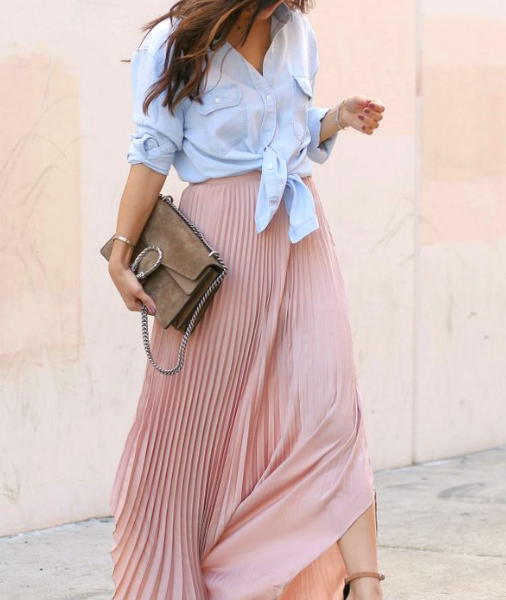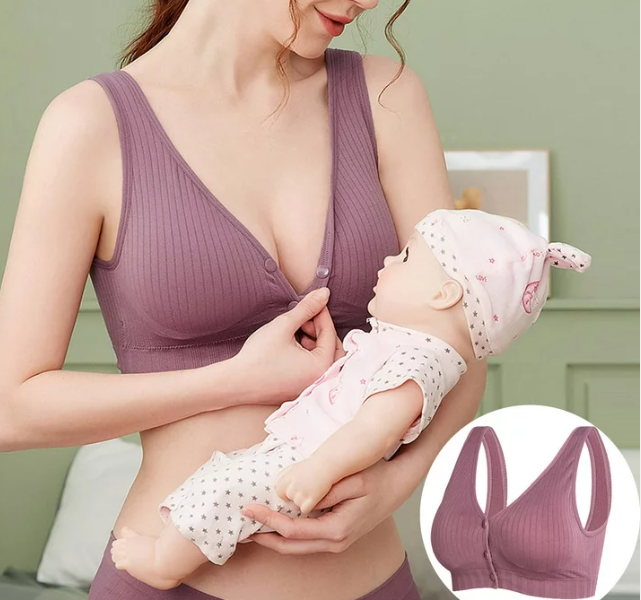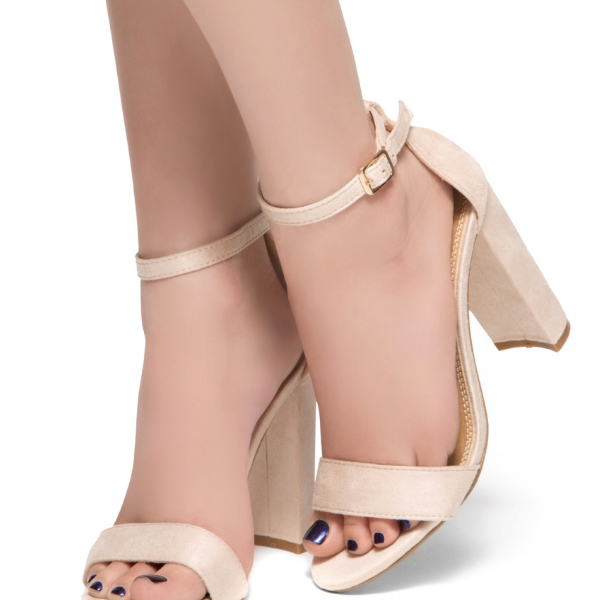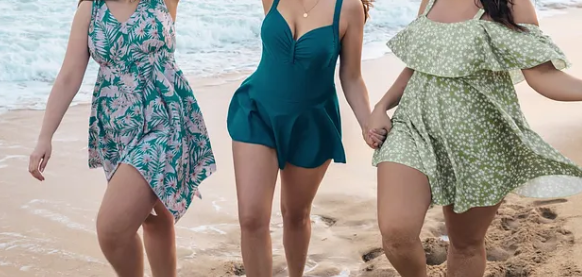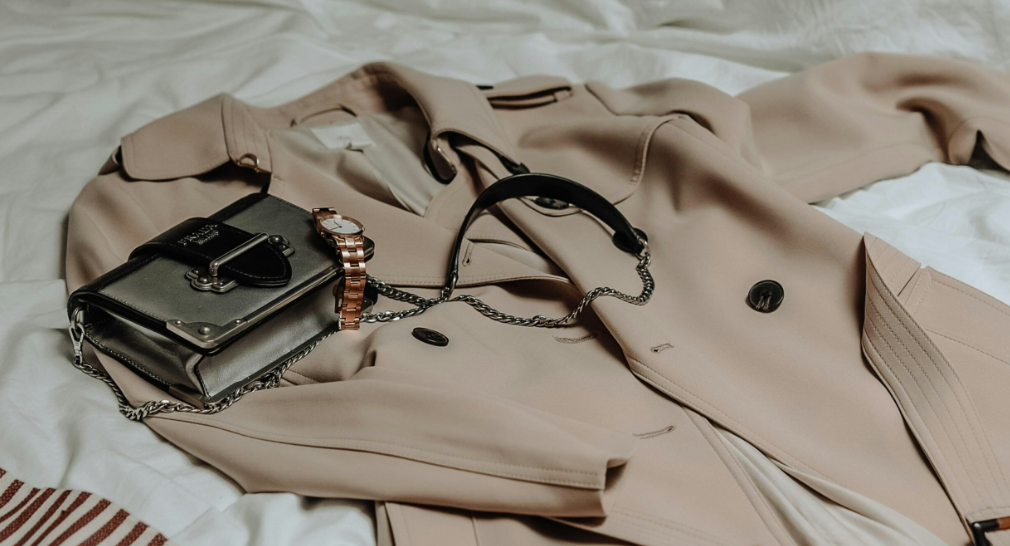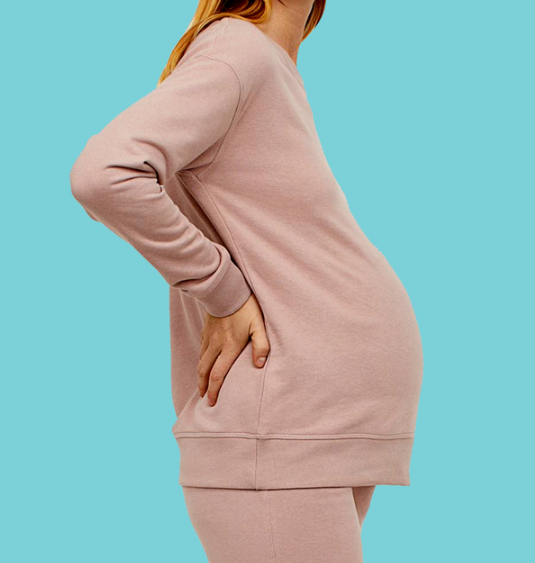
Pregnancy is an incredible journey filled with beautiful changes, including the transformation of your body to accommodate your growing baby. During the first trimester, many new moms continue to wear their regular clothes but may start to wonder when to switch to maternity wear. The answer is simple: you can begin wearing maternity clothes whenever it feels right for you.
At what point in your pregnancy do you begin wearing maternity clothes?
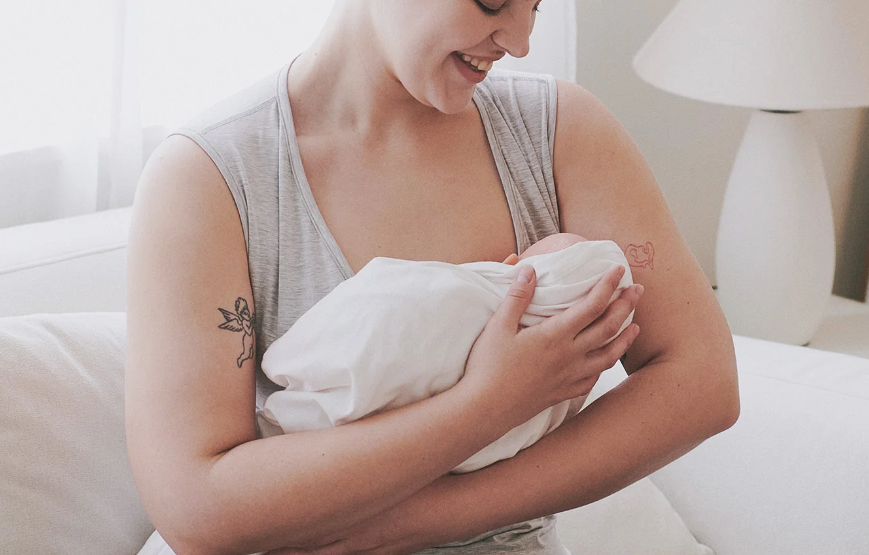
Most moms-to-be start wearing maternity clothes around the second trimester, typically between 12 and 16 weeks. As your baby bump grows, you may find that your regular clothes become too tight and uncomfortable.
However, every pregnancy is unique, so it’s important to listen to your body. You should switch to maternity clothes whenever you start feeling uncomfortable in your usual attire or notice your bump becoming more noticeable.
Is it too early to start wearing maternity clothes in the first trimester?
During weeks 1 to 12 of pregnancy, most women do not need maternity clothes. Your body is still adjusting to early pregnancy changes, and your bump typically isn’t large enough to require maternity wear.
However, some women may opt for maternity clothes in the first trimester for comfort, especially if they experience bloating or if their regular clothes feel too snug. While comfort is key, if you shop early, choose maternity wear that will grow with you into the second or third trimester.
Can you wear regular clothes during pregnancy?
Many pregnant women continue wearing regular clothes for as long as possible, especially early on when their bodies may not have significantly changed.
Some find that certain styles, like loose-fitting tops, stretchy leggings, or specific dresses, can comfortably accommodate their growing belly for much of the pregnancy, if not the entire duration.
As your baby bump grows, however, regular clothes may become less practical. At this point, transitioning to maternity clothing designed for your changing body can provide the comfort and support you need.
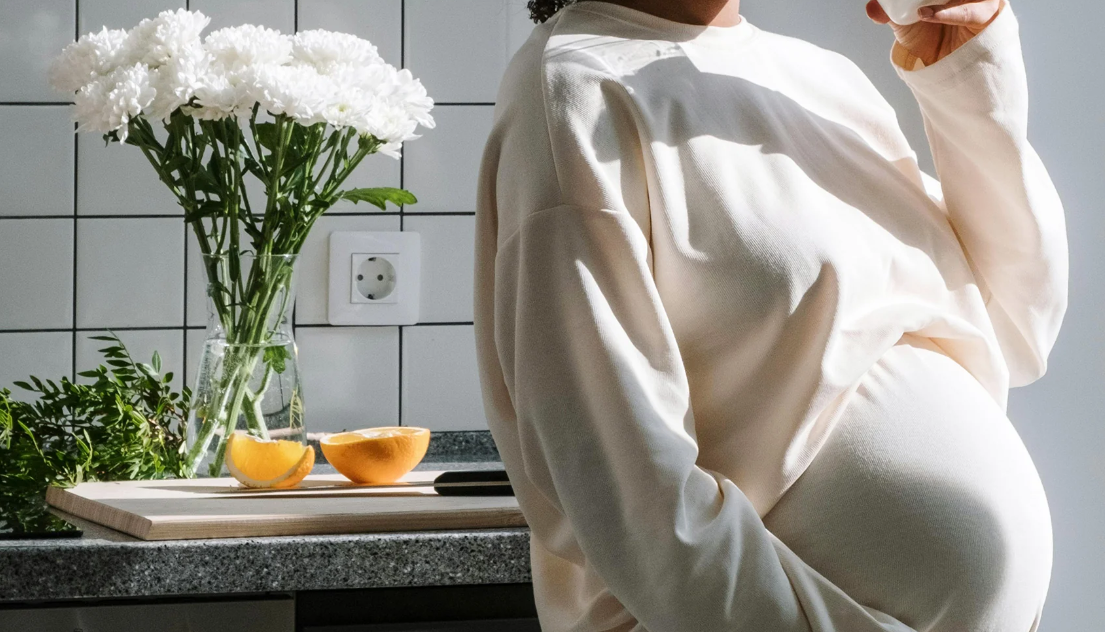
Should you buy your regular size in maternity clothes?
If you’re new to maternity wear, getting the right size can be a bit daunting. Generally, maternity sizes align with your pre-pregnancy size. So, if you typically wear a size 8 in regular clothes, you’ll likely wear the same size in maternity wear.
Maternity clothing often incorporates stretchy fabrics and adjustable waistbands to accommodate your growing bump. However, since every woman’s body changes differently during pregnancy, you may need to adjust the sizing based on your comfort and fit preferences. Some women opt to size up for extra comfort, while others find their regular size fits just fine. The best approach is to try on maternity clothes before making a decision.
Why should you avoid tight clothes during pregnancy?
Tight clothing isn’t recommended for several reasons:
- Restricted blood flow: Tight clothing, particularly around the waist, can impede blood flow to both you and your baby.
- Discomfort: Tight garments may cause skin irritation, chafing, and restrict your movement, especially as your bump grows.
- Health concerns: Tight clothing, especially around the midsection, can exacerbate acid reflux, heartburn, and indigestion. It also increases pressure on blood vessels, potentially leading to varicose veins and hemorrhoids.
- Risk of infections: Snug attire can trap moisture and heat against your skin, fostering bacterial and fungal growth, which can lead to infections like yeast infections.
How can you dress for work during pregnancy?

Despite workplace dress codes, you can still look professional and feel comfortable with a baby bump by:
- Investing in versatile maternity basics like pants, tops, and dresses that you can mix and match.
- Adding a cardigan or blazer for a polished look.
- Opting for stretchy fabrics that adapt to your changing shape.
- Choosing clothing with adjustable waistbands or drawstrings for flexibility.
- Prioritizing supportive footwear, such as low-heeled shoes or flats with insoles, to reduce strain.
- Dressing in a way that boosts your confidence, as feeling good translates to looking good.
Determining how much maternity clothing to buy can feel daunting.
Cute maternity outfits can boost your confidence, and the quantity you’ll need depends on your preferences. Some moms-to-be opt for a minimalist wardrobe, while others prefer a more extensive collection. There’s no right or wrong amount of maternity wear to purchase.
Start by assessing your current wardrobe to identify which items can accommodate your changing body. Then, gradually add maternity clothes to fill any gaps.
Invest in versatile basics like jeans, tops, and dresses that can be mixed and matched. As your body changes, buy maternity clothing gradually, focusing on essentials and adding pieces as necessary.
As a guideline, consider acquiring approximately 5–7 versatile tops, 2–4 pairs of maternity bottoms (like jeans, leggings, or skirts), 2–3 dresses, and a few comfortable maternity bras and underwear.
Types of maternity clothing:
1. Nursing bras offer comfort and easy access for breastfeeding, featuring adjustable straps, nursing clips, and soft, stretchy fabrics.
2. Maternity and nursing tops accommodate your growing belly and provide convenient breastfeeding access, often featuring empire waistlines and discreet openings.
3. Maternity t-shirts are longer and stretchier, crafted from soft, breathable fabrics for maximum comfort.
4. Maternity tank tops are ideal for warm weather, offering lightweight coverage with stretchy fabrics and extra length to accommodate your bump.
5. Maternity and nursing dresses flatter your changing shape while offering comfort and style, often featuring stretchy fabrics and hidden nursing openings.
6. Maternity rompers boast a relaxed fit and adjustable waistband, making them stylish and comfortable maternity options.
7. Maternity pants come with stretchy waistbands or adjustable panels to accommodate your growing belly, available in styles like jeans, trousers, leggings, and more.
8. Maternity joggers offer a comfortable and stylish option for casual wear during pregnancy, featuring a slim fit, elasticized waistbands, and stretchy fabrics.
9. Maternity shorts feature stretchy waistbands and extra room for your bump, available in various lengths to keep you fashionable and cool in warm weather.
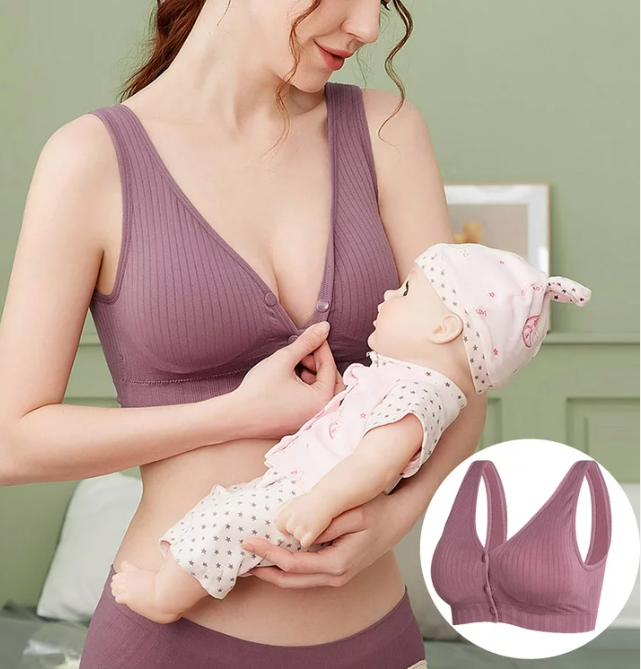
What are the Most Comfortable Fabrics During Pregnancy?
Comfort is key during pregnancy, and choosing the right fabrics can make a big difference. Here are some top picks for comfortable pregnancy fabrics:
- Cotton: Known for its breathability and softness, cotton is gentle on the skin and allows for airflow, keeping you cool and comfortable. Organic cotton is an even better choice, as it’s free from harmful toxins, making it safe for you, your baby, and the environment.
- Bamboo: This fabric is soft, hypoallergenic, and eco-friendly. It has natural moisture-wicking and antibacterial properties, keeping you feeling fresh and comfortable all day.
- Jersey: Jersey is a stretchy knit fabric known for its comfort and flexibility. It has a smooth texture and stretches to accommodate your growing belly while maintaining its shape and providing support.
- Spandex: Spandex is a synthetic fiber with excellent stretch and recovery properties. It’s often blended with other fabrics like cotton or polyester to add flexibility and a supportive fit to maternity clothing.
What are the best maternity sleepwear options?
During pregnancy, opt for loose-fitting maternity nightgowns, pajama sets, or lounge dresses crafted from soft, breathable fabrics like cotton for a comfortable sleep. Consider wearing a supportive sleep bra for added comfort. Additionally, some women find wearing a maternity robe before bedtime and during relaxed mornings provides extra warmth and comfort.
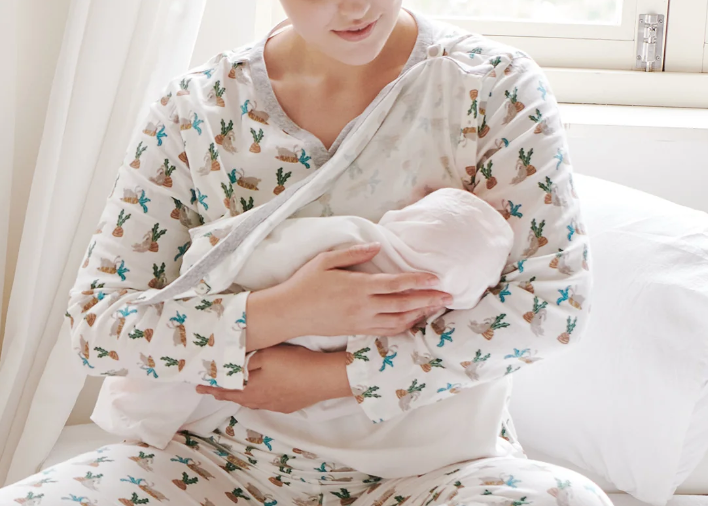
Should You Wear Maternity Clothes After Giving Birth?
Many women choose to continue wearing maternity clothes after giving birth. Pregnancy brings temporary changes to your body size and shape, and maternity wear offers comfort, gentle support for the abdomen, and convenience for breastfeeding.
How to Buy Maternity Clothes Like a Pro
Shopping for maternity clothes can be fun and rewarding. With a few tips in mind, you can find outfits that fit well, flatter your changing body, and keep you comfortable throughout your pregnancy:
- Start with the basics: Begin your maternity wardrobe with essentials like maternity jeans, versatile tops, and dresses. These can be mixed and matched for different looks.
- Prioritize comfort: Look for fabrics that are soft, breathable, and stretchy. Cotton, bamboo, and jersey are great choices. These fabrics will accommodate your growing bump and keep you comfortable.
- Check for adjustability: Look for clothes with adjustable waistbands or stretchy panels. These features will ensure a good fit as your body changes.
- Consider your lifestyle: Choose clothes that suit your daily activities. If you work, you may need professional maternity wear. For more casual days, opt for comfortable loungewear.
- Size up when needed: While many maternity clothes are designed to fit throughout your pregnancy, don’t hesitate to size up if necessary. Your body will change, and you’ll want clothes that fit comfortably.
- Try before you buy: Whenever possible, try on maternity clothes before purchasing. This will help you ensure a good fit and determine how the fabric feels against your skin.
- Invest in maternity undergarments: Supportive maternity bras and underwear can make a big difference in your comfort level. They’ll also help your clothes fit better and provide the support you need.
By following these tips, you can build a maternity wardrobe that meets your needs and makes you feel great throughout your pregnancy.
Tips for Buying Maternity Clothes
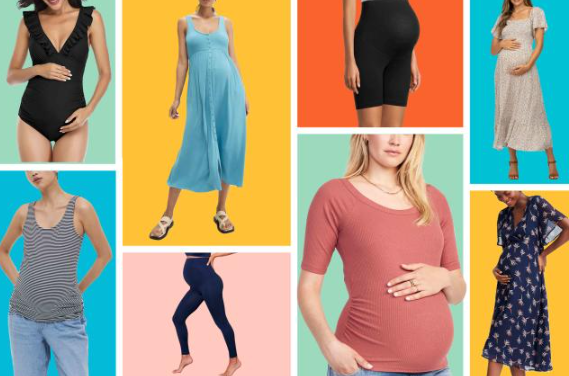
Shopping for maternity clothes can be an exciting experience, with many cute outfits available. When you shop, look for pieces that fit well, flatter your changing body, and meet your comfort needs.
Here are some tips to guide you:
- Start with the Basics: Begin with everyday essentials like versatile pants, tops, and dresses. These foundational pieces can be mixed and matched to create various outfits for different occasions.
- Prioritize Comfort: Opt for soft, breathable fabrics with stretch, such as cotton, bamboo, and jersey. These materials will adapt to your growing body and keep you comfortable.
- Look for Adjustable Features: Choose items with adjustable waistbands and stretchy panels to accommodate your growing belly, providing both flexibility and support.
- Consider Your Lifestyle: Select maternity clothes that fit your daily activities. Invest in work-appropriate pieces if needed, or opt for comfortable, casual loungewear for everyday use.
- Size Up When Necessary: Most maternity clothes are designed to fit your changing shape, so you can often buy your pre-pregnancy size. However, as your bump grows, you may need to size up certain items for added comfort.
- Try Before You Buy: Whenever possible, try on maternity clothes to check the fit, feel the fabric, see how they look, and experience how they move with your body.
- Invest in Maternity Undergarments: Supportive maternity bras and underwear can significantly impact how your clothes fit and feel, ensuring better comfort and support throughout your pregnancy.





